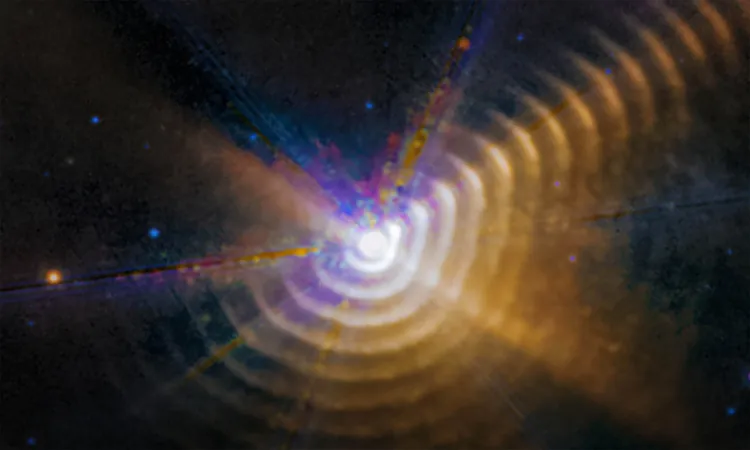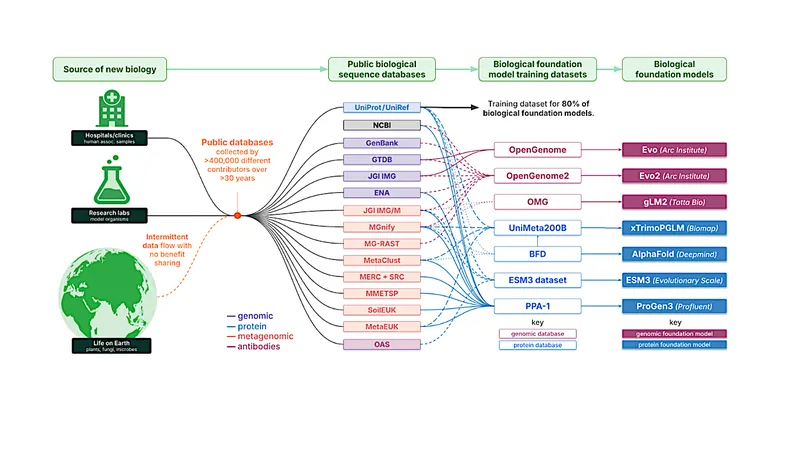
Hidden Carbon Factories Discovered by Webb Telescope: A Cosmic Breakthrough
2025-01-21
Author: Arjun
Hidden Carbon Factories Discovered by Webb Telescope: A Cosmic Breakthrough
Astronomers have long been on a quest to uncover the origins of the building blocks of life, particularly elements like carbon, crucial for forming stars and planets across the universe. Recent astonishing findings from NASA's James Webb Space Telescope have revealed a striking phenomenon taking place in the Milky Way, approximately 5,000 light-years from Earth, in a unique system known as Wolf-Rayet 140.
In this system, two massive stars are engaged in a cosmic dance, orbiting one another in elongated paths. Every eight years, these titanic stars come remarkably close, causing their powerful stellar winds to collide. This spectacular collision compresses the materials within the winds, generating massive amounts of carbon-rich dust, which eventually escapes into space.
The James Webb Space Telescope has the capability to observe mid-infrared light, which makes it possible to highlight cooler materials like the carbon-rich dust produced during these encounters. This groundbreaking discovery enables astronomers to track how dust forms and expands into the surrounding cosmos.
The Incredible Speed of Dust Shells
Emma Lieb, a doctoral student and lead author of the accompanying study, emphasized the telescope's success in confirming the existence of the dust shells and revealing that they move outward at an astounding velocity of over 1,600 miles (2,500 kilometers) per second—nearly 1% of the speed of light. This rapid expansion is extraordinary, as most cosmic events are typically thought to unfold over millions or even billions of years. Instead, in this binary system, dust formations are visible from one year to the next, showcasing the time-sensitive nature of the processes at play.
So far, the James Webb Telescope has identified 17 distinct shells of dust, each corresponding to moments when the stars' close encounters produced new material. These shells illustrate a consistent and ongoing process of dust creation spanning over 130 years. While many older shells may have dispersed and faded from detection, thousands more are anticipated to form in the future.
The Role of Carbon Dust in Star and Planet Formation
The carbon-rich dust generated from Wolf-Rayet 140 plays a pivotal role in the cosmic ecosystem, acting as a fundamental building block for new stars and planets. These dust particles exhibit various structures, forming massive amorphous clouds or existing as individual grains. The unique properties of mid-infrared observations are crucial, as they reveal cooler dust that is often overlooked in traditional infrared and visible light surveys.
Ryan Lau, a co-author of the study, underscored the importance of this dust, stating, "We know carbon is necessary for the formation of rocky planets and solar systems like ours." The implications of this research extend beyond Wolf-Rayet 140, hinting at a pathway for understanding the distribution of carbon-rich dust throughout the galaxy.
Future of the Wolf-Rayet 140 System
As the Wolf-Rayet star moves closer to the end of its stellar life, it faces a crucial turning point that could have profound cosmic consequences. Given its mass—over ten times that of the Sun—this star is destined for one of two dramatic fates: it could end its life in a spectacular supernova explosion, scattering its carbon-rich dust across vast cosmic distances, or it might collapse under its own gravity, potentially creating a black hole while preserving a record of its materials.
This duality represents a key moment in the lifecycle of massive stars, illustrating their significant impact on the galaxy's composition and the future of elemental materials. As Lau put it, "A major question in astronomy is, where does all the dust in the universe come from? If carbon-rich dust like this survives the life cycle of these stars, it may provide foundational answers."
A Glimpse into Our Cosmic Heritage
The James Webb Space Telescope is continuing to unlock the mysteries of the universe, offering humanity invaluable insights into the origins of elements and celestial structures. As this groundbreaking research unfolds, we are brought closer to understanding our place in this vast cosmos.
Stay tuned for more exciting discoveries as the hidden secrets of the universe continue to emerge!




 Brasil (PT)
Brasil (PT)
 Canada (EN)
Canada (EN)
 Chile (ES)
Chile (ES)
 Česko (CS)
Česko (CS)
 대한민국 (KO)
대한민국 (KO)
 España (ES)
España (ES)
 France (FR)
France (FR)
 Hong Kong (EN)
Hong Kong (EN)
 Italia (IT)
Italia (IT)
 日本 (JA)
日本 (JA)
 Magyarország (HU)
Magyarország (HU)
 Norge (NO)
Norge (NO)
 Polska (PL)
Polska (PL)
 Schweiz (DE)
Schweiz (DE)
 Singapore (EN)
Singapore (EN)
 Sverige (SV)
Sverige (SV)
 Suomi (FI)
Suomi (FI)
 Türkiye (TR)
Türkiye (TR)
 الإمارات العربية المتحدة (AR)
الإمارات العربية المتحدة (AR)